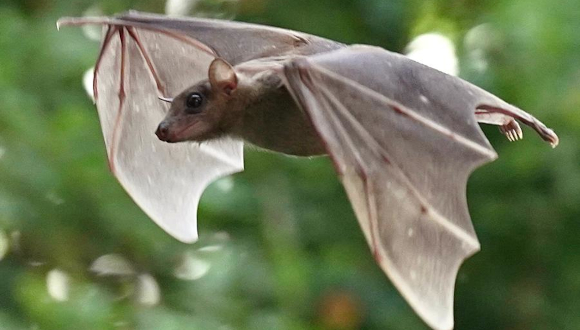No clear evidence that COVID-19 was transmitted to humans from bats, TAU study reveals

Early rumors were not based on scientific proof, causing unnecessary stress and confusion
Support this researchA new Tel Aviv University (TAU) study rejects assertions that the origin of the COVID-19 outbreak was in bats. According to the study, bats have a highly effective immune system that enables them to deal relatively easily with viruses considered lethal for other mammals.
The study was led by Dr. Maya Weinberg from the laboratory of Professor Yossi Yovel, head of TAU’s Sagol School of Neuroscience and faculty member of TAU’s School of Zoology and Steinhardt Museum of Natural History. The research team reviewed dozens of leading articles and studies in this field, and their conclusions were published on August 19, 2022, in iScience.
The researchers explain that the infamous reputation of the bats is well known among both the scientific community and the public at large and that bats are often accused of being reservoirs of viruses including COVID-19, posing a threat to public health. In the present study, Dr. Weinberg sought to disprove this erroneous theory and show that bats play an important role in exterminating insects, replanting of deforested areas, and pollination of a number of crops.
The researchers claim that there is indeed evidence that the origin of the ancient potential COVID-19 was in bats. But now, two years after the pandemic first broke out, researchers still do not know for sure what the exact origin of the COVID-19 variant is.
“In general, bats are mistakenly conceived of as reservoirs of many contagious diseases due to their being positive serologically positive; in other words, they possessed antibodies, which means that bats have survived the disease and developed an immune response,” Dr. Weinberg says. “But after that they overcame the virus altogether and disengaged from it; hence, they are no longer its carriers. In many cases a virus similar to a human pathogen is liable to be found in bats, but it’s not pathogenic to humans and not sufficient to claim bats as a reservoir.
“In order to examine the overall situation, we conducted a meta-analysis of the literature and checked the finding for over 100 viruses for which bats are considered potential reservoirs, such as Ebola, SARS, and COVID,” Dr. Weinberg continues. “We found that in a considerable number of cases (48%), this claim was based on the incidence of antibodies or PCR tests, rather than actual isolation of identical viruses. Moreover, many of the reported findings are not convincing.
“The mere isolation of a virus is not enough to identify an animal as a reservoir, since a minimum number of index cases is required in which the virus is isolated in order to be considered a reservoir animal, as well as the existence of an established path of transmission. Furthermore, the very detection of a particular virus in bats does not necessarily ensure further infection, and other biological, ecological, and anthropogenic conditions must exist in order for such an event to occur.”
In recent years researchers have accumulated evidence that bats are capable of coping with different viruses, including lethal ones, better than humans and most other mammals. After over 100 years of focus on viruses carried by bats, it appears that their immune system is characterized by a restrained response during inflammatory processes. The TAU researchers believe that bats have developed an excellent balance between resistance and tolerance: an increased defense response of the host, and immune tolerance through a number of different mechanisms. Moderate inflammatory pathways contribute to immune tolerance with bats, and a well-balanced response that prevents the virus from developing.
“The comprehensive study we’ve conducted raises serious doubts regarding the possibility of bats being the origin of the COVID-19 outbreak,” Dr. Weinberg concludes. “The findings give rise to the opposite perspective, according to which we must study in-depth the immunological anti-viral capabilities of bats, and thus obtain new and effective means of coping in humanity’s struggle against contagious disease, aging, and cancer.”